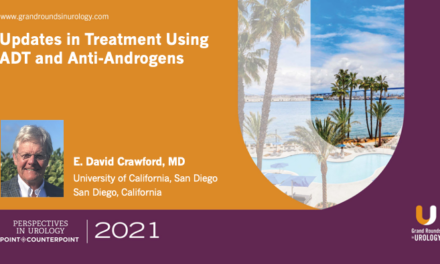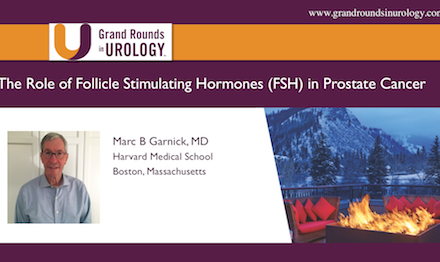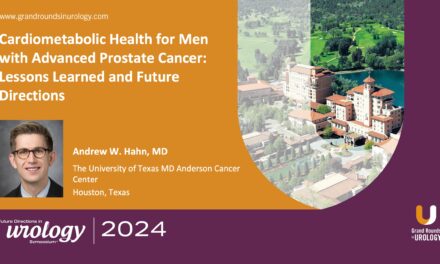ADT Side Effects: Cardiovascular Disease
In a program supported by Verity Pharmaceuticals, E. David Crawford, MD, Editor-in-Chief of Grand Rounds in Urology and Professor of Urology at the University of California, San Diego; Celestia S. Higano, MD, FACP, Adjunct Professor, Department of Urologic Sciences, University of British Columbia and Medical Director, Prostate Cancer Supportive Care Program, Vancouver Prostate Centre, Vancouver, British Columbia; and Evan R. Goldfischer, MD, MBA, Director, Research Department, Premier Medical Group and President-elect of the Large Urology Group Practice Association (LUGPA), Poughkeepsie, New York, discuss major adverse cardiac events (MACE) as a side effect of androgen-deprivation therapy (ADT).
Dr. Crawford lists the side effects of ADT and shares data comparing risk of diabetes, coronary artery disease (CAD), acute myocardial infarction (MI), sudden cardiac death, and stroke among men with and without ADT. He then displays data that show patients with a history MACE were more likely to experience MACE following ADT, concluding that is consistent with previous publications and studies and pointing to an analysis of data over 10 years from >44,000 prostate cancer patients.
Dr. Higano highlights results of the PRONOUNCE trial. She provides background, highlighting that atherosclerotic cardiovascular disease (ASCVD) is the primary non-cancer cause of death among patients with prostate cancer. Dr. Higano explains the study was terminated due to smaller-than-planned participant numbers and MACE events and no difference being found in the rate of cardiovascular events at 12 months between patients assigned to degarelix or leuprolide. The relative cardiovascular safety of GnRH antagonists compared with agonists remains unresolved. She cites the need for rigorously conducted cardio-oncology trials to better define the cardiovascular risk of new cancer agents, explaining that PRONOUNCE provides a model for interdisciplinary collaboration. Dr. Higano emphasizes the importance of systematic baseline cardiovascular risk assessment and identifying patients at high risk of MACE to ensure they are connected to a cardiologist, rather than selecting one ADT drug over another; she also emphasizes educating patients about risk mitigation through exercise, healthy diet, and not smoking.
Dr. Goldfischer then begins by citing insights from the RADICAL PC study and quoting its conclusions. He points out that ADT can further increase the risk of MACE in patients already at high risk, but ADT may not be the cause of MACE in average, baseline patients; indeed, part of the ADT association with MACE that has been reported may be driven by previously unmeasured cardiovascular risk factors. Dr. Goldfischer emphasizes that for those at high risk of MACE who need ADT, urologists should collaborate with high-risk patients’ primary care physicians, cardiologists, or cardio oncologists to aggressively manage risk.
The panel concludes with a series of follow-up questions from Dr. Crawford as well as take home messages from each of the participants about managing MACE in patients on ADT.
Supported by







